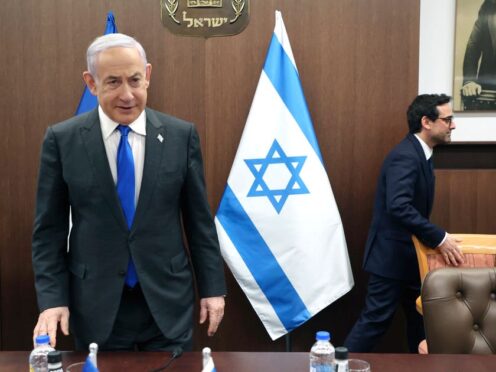Israeli Prime Minister Benjamin Netanyahu has rejected Hamas’s terms for a ceasefire and hostage-release agreement, calling them “delusional”.
Mr Netanyahu vowed to press ahead with Israel’s war against Hamas, now in its fifth month, until achieving “absolute victory”.
He made the comments shortly after meeting US secretary of state Antony Blinken, who has been travelling around the region in the hope of securing a ceasefire agreement.
“Surrendering to Hamas’s delusional demands that we heard now not only won’t lead to freeing the captives, it will just invite another massacre,” Mr Netanyahu said in a nationally televised evening news conference.
“We are on the way to an absolute victory,” he said, adding that the operation would last months, not years. “There is no other solution.”
He ruled out any arrangement that leaves Hamas in full or partial control of Gaza. He also said that Israel is the “only power” capable of guaranteeing security in the long term.

Earlier, Mr Blinken said that “a lot of work” remains to bridge the gap between Israel and Hamas on the terms for any deal but an agreement is possible.
“While there are some clear non-starters in Hamas’s response, we do think it creates space for an agreement to be reached,” Mr Blinken said.
Hamas laid out a detailed, three-phase plan to unfold over four-and-a-half months, responding to a proposal drawn up by the United States, Israel, Qatar and Egypt.
The plan stipulates that all hostages would be released in exchange for hundreds of Palestinians imprisoned by Israel, including senior militants, and an end to the war.
Israel has made destroying Hamas’s governing and military abilities one of its wartime objectives, and Hamas’s proposal would effectively leave it in power in Gaza and allow it to rebuild its military capabilities.
President Joe Biden said Hamas’s demands are “a little over the top” but that negotiations will continue.
The deadliest round of fighting in the history of the Israeli-Palestinian conflict has killed over 27,000 Palestinians, levelled entire neighbourhoods, driven the vast majority of Gaza’s population from their homes and pushed a quarter of the population to starvation.
Iran-backed militant groups across the region have conducted attacks, mostly on US and Israeli targets, in solidarity with the Palestinians, drawing reprisals as the risk of a wider conflict grows.
Israel remains deeply shaken by the October 7 attack in which Hamas militants burst through the country’s vaunted defences and rampaged across southern Israel, killing some 1,200 people, mostly civilians, and abducting 250, around half of whom remain in captivity in Gaza.
Mr Blinken, who is on his fifth visit to the region since the war broke out, is trying to advance the ceasefire talks while pushing for a larger post-war settlement in which Saudi Arabia would normalise relations with Israel in return for a “clear, credible, time-bound path to the establishment of a Palestinian state”.
But the increasingly unpopular Mr Netanyahu is opposed to Palestinian statehood, and his hawkish governing coalition could collapse if he is seen as making too many concessions.
“There’s a lot of work to be done, but we are very much focused on doing that work,” Mr Blinken told Israel’s ceremonial president Isaac Herzog.

The Palestinian death toll from four months of war has reached 27,707, according to the Health Ministry in the Hamas-run territory. That includes 123 bodies brought to hospitals in just the last 24 hours, it said on Wednesday.
At least 11,000 wounded people need to be urgently evacuated from Gaza, it said.
The ministry does not distinguish between civilians and combatants in its figures but says most of the dead have been women and children.
Israel has ordered Palestinians to evacuate areas that make up two-thirds of the tiny coastal territory. Most of the displaced are packed into the southern town of Rafah near the border with Egypt, where many are living in squalid tent camps and overflowing UN-run shelters.
Hamas has continued to put up stiff resistance across the territory and its police force has returned to the streets in places where Israeli troops have pulled back. Hamas is still holding over 130 hostages but around 30 of them are believed to be dead, with the vast majority killed on October 7.
